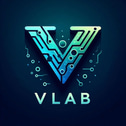A Beginner's Guide to Generative AI
Unleashing Creative Power of Machines


Introduction
Artificial Intelligence (AI) has been creating ripples in the world in recent times by changing how people engage in their activities. Generative AI is one of the most intriguing facets of AI that has attracted a lot of attention. Through this advanced technology, computers are able to make content, mimic human creativity, make art, create songs, text and much more. If you are new to AI, don’t worry! This beginners’ guide will introduce you to Generative AI and help you understand some basics about this thrilling field.
What is Generative AI?
Generative AI is that form of artificial intelligence which is aimed at enabling machines to produce content that appears as if it was created by humans as far as creativity and intellect are concerned. Generative AI, unlike the traditional AI systems that are rule-based, employs neural networks in generating new outputs that are highly creative in most cases. These can either be texts, pictures, songs etc.
How Does Generative AI Work?
Generative AI uses neural networks that mimic the structure and behavior of a human brain. Generative Adversarial Networks (GANs) or Recurrent Neural Networks (RNNs) are two examples of Neural Networks typically used in Generative AI. Here’s a brief explanation on their operation:
Generative Adversarial Networks (GANs): Consisting of two neural networks – a generator and a discriminator – GANs involve the former producing content while the latter assesses it. They engage in continuous competition with each other. The generator tries to create content that looks as real as possible whereas the discriminator attempts to recognize fake content. Over time the generator progressively produces more lifelike outputs through this adversarial process
Recurrent Neural Networks (RNNs): RNNs are types of neural networks that are good at modeling sequential data like music and text. They follow back loops making them able to process a step-by-step series of data into coherent sequences of content. RNNs have the capabilities of being taught patterns on vast data sets which can later be used to generate related items.
Applications of Generative AI
Generative AI is being applied in different arenas to change the creative processes and make automation possible. Some notable applications are as follows:
Natural Language Processing: For instance, Generative AI generates human-like text that may be used in creating content, for instance, writing news articles or chatbots.
Art and Design: AI-generated art can take different forms such as artworks, digital designs or even architect plans.
Music Composition: This kind of generative AI can compose songs in various styles or genres thereby fueling creativity among composers or content creators.
Image Generation: For example, AI can also be used to synthesize realistic pictures like those of non-existent persons’ faces or realistic scenes.
Video Game Development: There are various ways in which artificial intelligence can help including building games, character generation and even writing plots.
Getting Started with Generative AI
If you are interested in Generative AI and wish to start, here’s how:
Learn the Basics: Start by getting conversant with the principles behind machine learning as well as neural nets. There are numerous free online courses, tutorials and books to guide you through these topics.
Programming Skills: As most AI frameworks and libraries are based on Python language, get to know it well.
Explore AI Frameworks: Use products like TensorFlow or PyTorch for hands-on exposure to tools and resources available for building generative models.
Online Courses and Resources: Make sure to sign up for internet courses or join Artificial Intelligence (AI) community where one can ask advice from professionals working within this sphere or just enthusiastic about it.
Practice: Start from undertaking simple projects before advancing onto more complex generative ones.
Conclusion
Artificial Intelligence (AI) is an exciting area full of possibilities for creativity and innovation. Talented individuals including artists, writers’ musicians or just about anyone with an interest in AI’s potentials are able to make use of generative AIs. Use Generative AI’s power effectively to create and discover new paths of human-computer interaction. No need to wait – Get into generative AI at this moment to tap into your hidden creativity with the help from smart machines.
